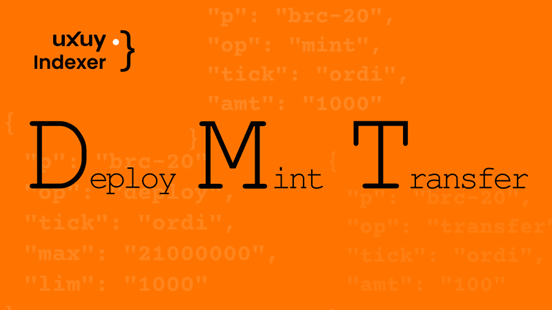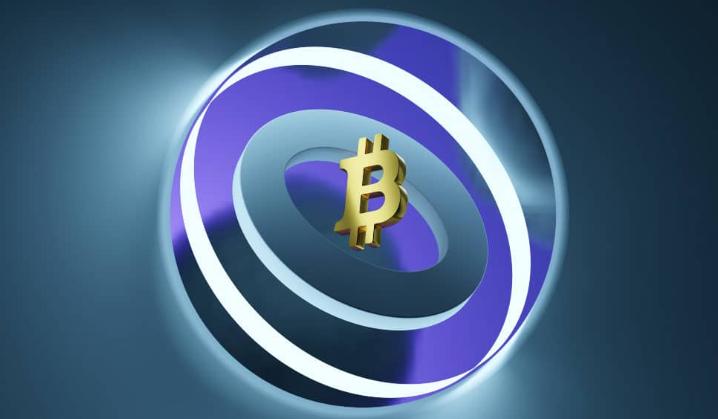UXUY founder Kevin talks about Indexer: Why inscriptions should follow the DMT principles
^Author: Kevin, Founder of UXUY^
On December 28, 2023, we launched the world's first standardized indexer—UXUY Indexer, officially serving the inscription track. As a multi-chain DEX, why are we creating an indexer? How do we view inscriptions as an emerging asset? What predictions do we have for the future? I would like to document my thought process and share it with everyone.
Inscriptions originated from Bitcoin, born from Ordinals, and have spread to the multi-chain ecosystem, flourishing amidst wild growth. At this moment, we must call for inscriptions to embrace Bitcoin and the spirit of Satoshi Nakamoto. This statement may sound abstract; a more accurate description would be to follow the DMT principle.
So, what is the DMT principle, and why is it so important?

DMT stands for Deploy, Mint, Transfer. Every participant should have the three on-chain DMT rights without relying on centralized third parties.
As Mr. Satoshi Nakamoto mentioned in the Bitcoin white paper: a completely peer-to-peer version of electronic cash would allow online payments to be sent directly from one party to another without going through a financial institution.
Next, I will introduce the importance of inscriptions following the DMT principle and the current issues faced by the inscription track.
The first BRC20 inscription was born on March 8, 2023. The creator of BRC20, Domo, utilized the Ordinals protocol to set inscriptions as JSON: by declaring a specific specification to simulate the logic of tokens, creating the first BRC20 inscription ORDI in the crypto world.

When inscriptions were merely on-chain storage code blocks, there was nothing remarkable about them; at that time: an inscription was just an inscription. However, when standardized inscriptions are processed and proven off-chain by an indexer, whoosh, everything changes!
Inscriptions transform into assets.
Unlike other assets such as tokens and NFTs, inscription assets inherently possess the following characteristics:
• The nature of gas fees ensures that each inscription asset has a corresponding production cost (Gas), inherently possessing asset attributes and is not easily extinguished.
• Decentralized Fairmint brings a paradigm shift in the primary market, sparking a frenzy in the inscription track, with star projects like $ORDI, $ETHS, and $POLS gaining widespread attention.
• There are no project parties; the progress of asset inscriptions is visualized and can be checked by anyone.
In an instant, a primary market accessible to everyone, like a shot of adrenaline, ignited the enthusiasm of the entire crypto industry. It seems that a fairer, more "decentralized" era has arrived.
But is it really so?
In my excitement, I casually experienced the thrill of "inscribing" beyond BRC20 and minted a niche inscription on the ETH chain, only to discover a major problem: after inscription, it could not be traded or transferred! Oh no! So, I researched and found that the methods of defining inscription transactions vary greatly among different chains like BTC, ETH, Polygon, and Avalanche, creating a gap in transactions…
Currently, except for Bitcoin Ordinals and BRC20, the inscription market is developing wildly in a "non-standardized" manner, going against the original intention of Bitcoin and the spirit of Satoshi Nakamoto.

Therefore, we urgently call for the inscription market to follow the DMT principle, ensuring the freedom of inscription establishment. Transfers and transactions should not rely on any centralized third party, nor should they use smart contracts for internal settlements, creating liquidity barriers.
For example, among the more than two million inscriptions on the ETH chain, nearly 99% of inscriptions have merely completed the inscription process and do not support transfer transactions; inscriptions are even unqualified to quietly lie in wallets, holding no value.
As mentioned above, the inscription you obtain by spending gas is just a string of code, completely lacking a trading environment. Currently, only leading inscriptions like ETHS have achieved so-called "transaction transfer" functions through the internal settlement of project parties' smart contracts.
This raises the question: is this still the new "decentralized" asset issuance paradigm we initially pursued?
In response, we are taking action: UXUY is actively embracing the spirit of Satoshi Nakamoto, continuously providing infrastructure services for the inscription track, and building a standardized indexer for inscriptions under the DMT principle, exploring new combinations of inscription assets + DeFi…
As stated in the "UXUY Crypto Equity Manifesto": trading is the only weapon to break down barriers. I firmly believe that inscriptions are becoming the third major asset after tokens and NFTs, whether called SFT or Inscription, it can become the most dazzling star in the crypto field.










